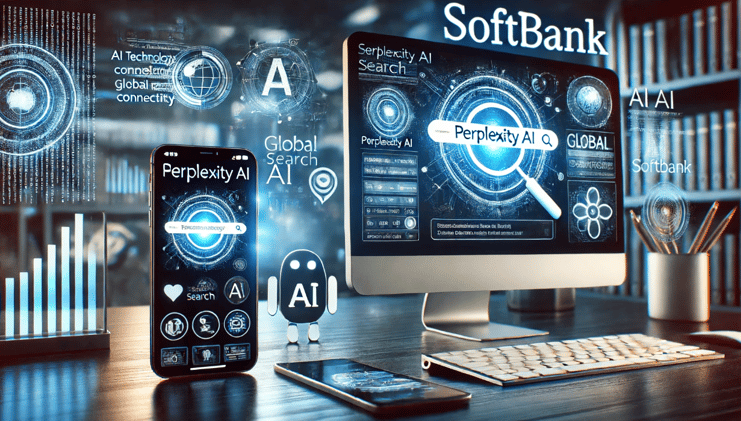Artificial Intelligence (AI) and Geoscience may seem like disparate fields at first glance. One is steeped in the world of algorithms and computational models, while the other delves into the study of Earth and its many phenomena. However, when these two fields intersect, the results can be nothing short of revolutionary. This is the exciting crossroads where we find ourselves today, as AI technologies are increasingly being applied to geoscience, opening up new possibilities for understanding and interacting with our planet.
The Advent of Large Language Models (LLMs)
One of the most transformative developments in AI in recent years has been the advent of Large Language Models (LLMs). These are AI models designed to understand, generate, and engage with human language in a way that is remarkably similar to how humans do. They are trained on vast amounts of text data, learning patterns, structures, and nuances of language that enable them to generate coherent and contextually appropriate responses.
The K2 Language Model, a large language model specifically designed for geoscience, represents a significant leap forward in the application of AI to geoscience. LLMs like K2 have the potential to revolutionize the field of geoscience by enabling researchers to analyze vast amounts of data, identify patterns and trends, and make predictions with unprecedented accuracy.
The K2 Model: A Foundation for Geoscience Knowledge Understanding
The K2 model is a pre-trained language model that has been fine-tuned on a large dataset of geoscience texts. This model has been designed to capture the nuances of geoscience language, enabling it to understand and generate text related to geological processes, geological structures, and geological phenomena.
The K2 model has several key features that make it an ideal tool for geoscience research:
- Domain knowledge: The K2 model has been trained on a large dataset of geoscience texts, giving it a deep understanding of geological concepts and terminology.
- Natural language processing: The K2 model can process and analyze natural language text related to geoscience, enabling researchers to extract insights from vast amounts of data.
- Knowledge representation: The K2 model has the ability to represent complex geoscience knowledge in a structured and accessible way.
The GeoSignal Dataset: A Resource for Geoscience Research
The GeoSignal dataset is a comprehensive collection of text data related to geoscience. This dataset has been specifically designed to support the development and training of LLMs like the K2 model, enabling researchers to fine-tune their models on large amounts of high-quality data.
The GeoSignal dataset contains:
- Geological texts: A vast collection of texts related to geological processes, structures, and phenomena.
- Annotations: Detailed annotations of each text in the dataset, providing context and meaning for each term and concept.
- Metadata: Metadata associated with each text, including author information, publication date, and relevant keywords.
The GeoBenchmark: A Tool for Evaluating Geoscience Models
The GeoBenchmark is a pioneering tool designed to provide a clear and objective measure of how well an AI model is performing in the context of geoscience. This benchmark has been specifically designed to evaluate models like the K2 model, enabling researchers to identify areas where their models excel, as well as areas where they may need further fine-tuning or development.
The GeoBenchmark includes:
- Evaluation metrics: A suite of evaluation metrics designed to assess a model’s performance in geoscience-related tasks.
- Task types: A range of task types, including text classification, question answering, and text generation.
- Dataset splits: Pre-defined dataset splits for training, validation, and testing.
The Future of AI in Geoscience: A New Era of Understanding
The development of the K2 model, the GeoSignal dataset, and the GeoBenchmark represents a seismic shift in the field of geoscience. By harnessing the power of AI, we are opening up new avenues for understanding and interacting with our planet.
The potential impact of AI and LLMs like K2 in the field of geoscience is immense. From predicting natural disasters to interpreting complex geological processes, the applications are as diverse as they are transformative. But perhaps the most exciting aspect of this development is the potential for democratizing geoscience. With tools like the K2 model, complex geoscience knowledge can be made accessible to a wider audience, fostering greater understanding and appreciation of our planet.
Conclusion: A New Frontier in Geoscience
The intersection of AI and geoscience is not just a meeting point of two fields; it’s a launching pad for a new era of exploration and understanding. The K2 model, with its impressive 7 billion parameters and fine-tuning with the GeoSignal dataset, represents a significant leap forward in the application of AI to geoscience.
The future of AI in geoscience promises even more sophisticated applications, greater accuracy in predictions, and deeper insights into our planet’s processes. The potential is vast, and the impact will be seismic.
References
- ‘Learning A Foundation Language Model for Geoscience Knowledge Understanding and Utilization’. This paper provides a comprehensive overview of the K2 model, the GeoSignal dataset, and the GeoBenchmark, and offers a deeper dive into the exciting possibilities of AI in geoscience.
https://paperswithcode.com/paper/learning-a-foundation-language-model-for - GitHub repository for the K2 model: https://github.com/davendw49/k2



